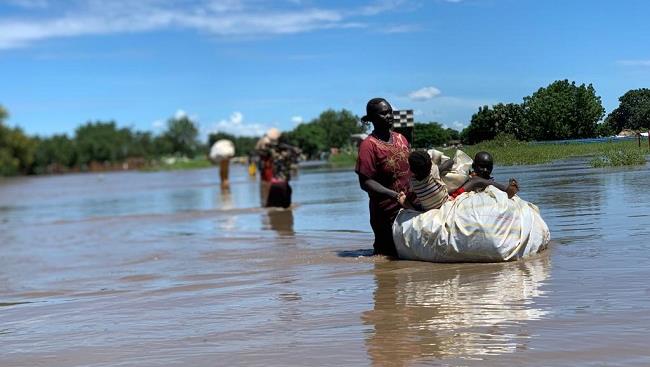More than 900,000 people have been impacted by floods in 29 counties across South Sudan and in the southern part of the Abyei Administrative Area, the United Nations humanitarian agency has said.

The UN Office for the Coordination of Humanitarian Affairs (OCHA) noted that the worst affected people are in the states of Northern Bahr El Ghazal, Warrap, Unity, and Western Equatoria.
“The floods destroyed livestock and crops; washed away roads and bridges; destroyed homes, schools, and health facilities.
“The floods submerged boreholes and latrines thereby contaminating water sources and risking outbreaks of waterborne diseases,” said the OCHA in its latest update on floods issued in Juba, the capital of South Sudan.
It noted that increasing water levels were reported in Rubkona and Bentiu towns of Unity state, putting pressure on existing dikes.
The OCHA said that the water levels have now reached the highest levels experienced in 2021, adding that efforts are ongoing to repair the areas needed and monitor any vulnerable areas ahead of further breaches.
“During the early hours of Oct. 9, two areas of the dikes breached, and required immediate support to prevent water flooding the humanitarian hub, the internally displaced people’s sites, and the United Nations Mission in South Sudan (UNMISS) base,” it said.
The situation in Western Bahr El Ghazal state has made it impossible for humanitarians to provide medical and nutrition supplies to the affected population in Raja County.
According to the OCHA, partners are responding to the affected people with limited resources available, often prioritising resources.
It, however, noted that response activities continue to be hampered by funding shortfalls, insecurity, and physical access constraints.
